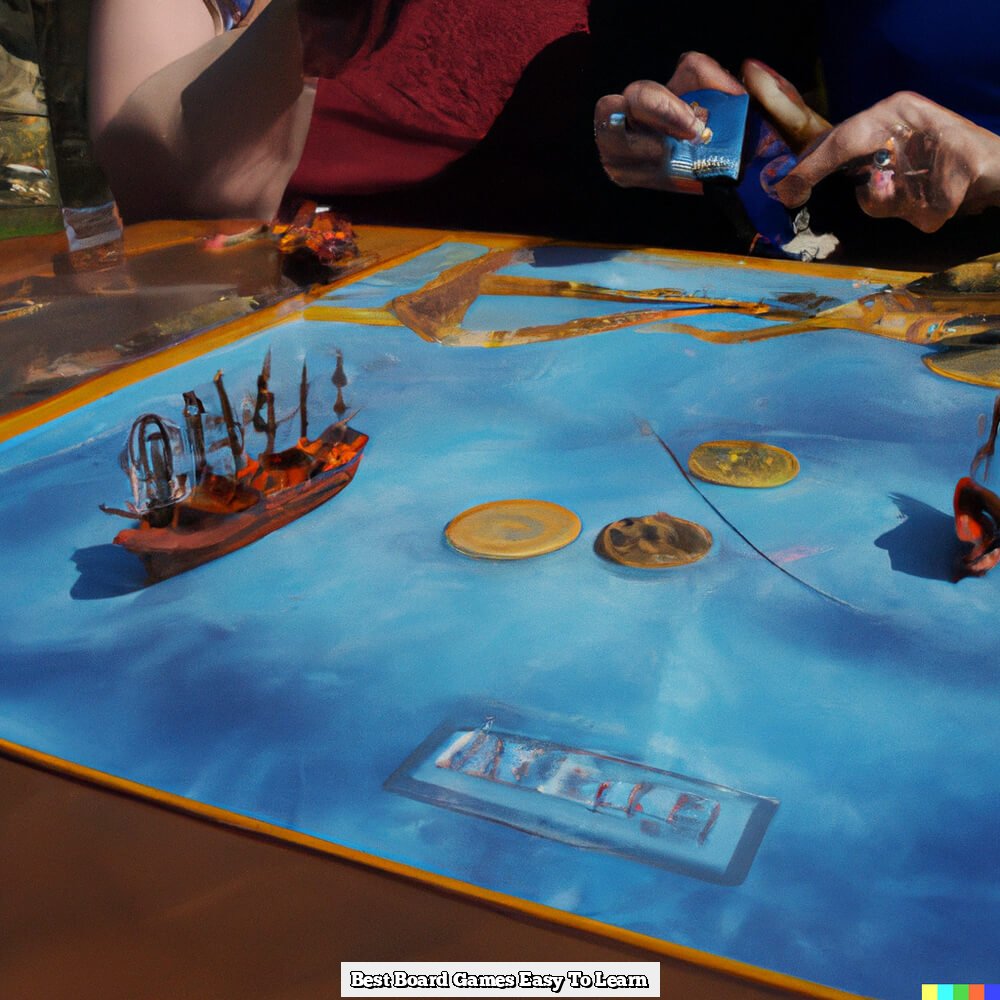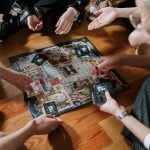Are you looking for easy classic board games for kids to keep them entertained and engaged? In today’s digital age, it’s important to remember the timeless appeal and educational value of traditional board games. These games not only provide hours of fun, but also help children develop essential skills such as critical thinking, decision making, and social interaction.
Classic board games offer numerous benefits for kids, from improving their cognitive abilities to providing a break from screen time. In this article, we will explore why these games are so valuable for child development, as well as provide a list of the top 5 easy classic board games that are perfect for kids. We’ll also discuss how to choose the right game for your child and share tips for teaching kids how to play these timeless favorites.
Whether you’re a parent looking for ways to entertain your kids or an educator searching for educational opportunities outside the classroom, classic board games can be a fantastic tool. Join us as we delve into the world of easy classic board games for kids and discover the endless possibilities they offer for family bonding and child development.
Benefits of Playing Classic Board Games for Kids
Development of Critical Thinking and Problem-Solving Skills
Playing classic board games helps kids develop critical thinking and problem-solving skills. Through games like chess or checkers, children learn how to anticipate their opponent’s moves, analyze the board, and make strategic decisions. These skills are crucial for academic success and are beneficial in various aspects of life.
Social and Emotional Development
Classic board games provide an opportunity for kids to learn important social skills such as taking turns, good sportsmanship, and handling both winning and losing gracefully. It also encourages bonding and communication with family members or friends, promoting a sense of belonging and fostering positive relationships.
Enhancement of Memory and Concentration
Engaging in classic board games requires children to remember rules, follow instructions, and analyze the game situation. This can enhance their memory retention abilities as well as improve concentration levels. As they focus on the game at hand, kids develop better attention spans which can carry over into other areas of their lives, such as schoolwork or other activities.
Top 5 Easy Classic Board Games for Kids
Classic board games are a great way to engage children in a fun and interactive activity while also teaching them important skills like critical thinking, decision making, and social interaction. Here are the top 5 easy classic board games for kids that have stood the test of time:
1. Candy Land: This colorful and fun game is perfect for young children as it requires no reading skills. Players journey through a magical land of sweet treats, encountering characters like King Kandy and Queen Frostine along the way. The game helps kids learn colors, counting, and simple game mechanics.
2. Chutes and Ladders: A classic counting game that teaches children about good deeds and consequences, Chutes and Ladders is a simple yet entertaining option for young kids. Players spin a spinner to move their game piece up ladders and down chutes, all while learning about cause and effect.
3. Connect 4: A strategic game that encourages critical thinking and planning ahead, Connect 4 is easy to learn but provides hours of entertainment for kids of all ages. The goal is to be the first player to get four of your colored discs in a row while blocking your opponent from doing the same.
4. Sorry.: This classic game of luck and strategy involves getting your colored pawns around the board while sabotaging your opponents’ progress along the way. It’s an exciting game that teaches kids about strategic thinking, taking chances, and understanding probabilities.
5. Guess Who?: A fun guessing game that helps kids develop deductive reasoning skills, Guess Who? revolves around asking yes or no questions to figure out which character card your opponent has chosen. It’s a great way for children to practice critical thinking and logical reasoning in a social setting.
These top 5 easy classic board games provide great opportunities for family bonding while helping kids develop important skills in a fun and engaging way.
| Classic Board Game | Description | Skill Developed |
|---|---|---|
| Candy Land | Journey through a magical land of sweet treats | Colors, Counting, Simple Game Mechanics |
| Chutes and Ladders | A classic counting game teaching about good deeds & consequences | Cause & Effect Learning |
How to Choose the Right Classic Board Game for Your Child
Choosing the right classic board game for your child can be a fun and rewarding experience. It’s important to consider a few key factors when making your decision, such as your child’s age, interests, and skill level. By taking these into account, you can ensure that the board game you choose will be both enjoyable and beneficial for your child.
First and foremost, it’s essential to consider your child’s age when selecting a classic board game. Younger children may benefit from games that focus on simple concepts like colors, shapes, or counting, while older kids might enjoy more complex games that involve strategy and critical thinking. Understanding your child’s cognitive abilities and attention span will help you choose a game that is appropriate for their developmental stage.
Another factor to consider is your child’s interests. Whether they are fascinated by animals, space, or mystery solving, there are classic board games available for virtually any interest. Choosing a game that aligns with your child’s hobbies or passions can spark their enthusiasm and make the gaming experience even more enjoyable.
Lastly, it’s important to assess your child’s skill level when selecting a classic board game. Some kids may excel at games that require quick thinking and fast reflexes, while others might prefer games that involve planning and strategic decision-making. By choosing a game that matches your child’s skills, you can provide them with a sense of accomplishment and keep them engaged in the gameplay.
| Factor to Consider | Consideration |
|---|---|
| Age | Your child’s cognitive abilities and attention span. |
| Interests | Aligning with your child’s hobbies or passions. |
| Skill Level | Evaluating what type of skills are required for different games. |
Tips for Teaching Kids How to Play Classic Board Games
Teaching kids how to play classic board games can be an enjoyable and rewarding experience for both parents and children. Here are some tips to make the process smooth and fun:
Start With the Basics
When introducing a classic board game to your child, it’s important to start with the basic rules and gameplay. Explain the objective of the game, the different pieces or cards used, and how each turn works. Keep the explanation simple and easy to understand, especially for younger children.
Use Visual Aids
Visual aids such as demonstration boards or example games can be helpful in teaching kids how to play classic board games. Seeing a visual representation of the game’s setup and mechanics can make it easier for kids to grasp the concepts and remember the rules.
Practice Patience and Encouragement
Learning a new game can be challenging for kids, so it’s important for parents to practice patience and offer encouragement during the teaching process. Be supportive if your child makes mistakes or doesn’t fully understand the rules right away. Encouragement can help build their confidence and enjoyment of playing classic board games.
By following these tips, parents can make teaching classic board games a positive experience for their children, while also creating opportunities for quality bonding time with family members.
Educational Value of Classic Board Games for Kids
Classic board games are not only a source of entertainment for kids, but they also provide valuable educational benefits. These games offer numerous opportunities for kids to develop important skills such as critical thinking, decision making, and social interaction. Here are some of the educational advantages of classic board games for kids:
- Strategic Thinking: Classic board games like chess and checkers require strategic thinking and planning ahead. Kids learn to anticipate their opponent’s moves and develop strategies to achieve their own objectives.
- Math Skills: Many classic board games involve counting spaces, adding or subtracting numbers, and understanding patterns. Games like Monopoly and Scrabble can help kids improve their math abilities in a fun and interactive way.
- Social Skills: Playing classic board games with others helps children learn about taking turns, following rules, and being a gracious winner or loser. These social interactions are important for their emotional development and ability to work well with others.
In addition to these specific skills, classic board games also promote overall cognitive development by stimulating memory, concentration, and problem-solving abilities. As parents and educators seek ways to make learning fun for kids, integrating classic board games into their activities can be an effective and enjoyable approach.
Moreover, these games often have historical or cultural significance that can spark interest in different time periods or places around the world. Whether it’s learning about ancient civilizations through a game of Senet or exploring the origins of traditional Chinese checkers, classic board games can serve as valuable tools for introducing kids to various aspects of history and culture.
Fun Variations and Twists for Classic Board Games to Keep Kids Engaged
Classic board games are a great way to engage and entertain kids, but sometimes it can be fun to switch things up and add a twist to the traditional rules. Here are some fun variations and twists for classic board games to keep kids engaged:
- **Candy Land**: To add an extra element of challenge, try playing Candy Land in reverse. Start at the end and work your way to the beginning, making it more difficult for kids to navigate the colorful path.
- **Chutes and Ladders**: Create your own version of Chutes and Ladders by adding new slides or ladders to the game board. This will surprise kids with unexpected shortcuts or setbacks, keeping them on their toes.
- **Monopoly Junior**: To make the game more interactive, introduce “chance” cards that require players to perform silly tasks or answer trivia questions before they can proceed with their turn.
Adding a new twist to classic board games not only keeps kids entertained, but also encourages creativity and strategic thinking as they adapt to new rules and challenges. It’s a great way to breathe new life into old favorites and create lasting memories with your children.
Whether it’s reversing the game board or incorporating new elements, these variations can make classic board games even more exciting for kids. So next time you take out a classic board game, don’t be afraid to shake things up a bit.
Conclusion
In conclusion, classic board games have stood the test of time for a reason – they offer numerous benefits for kids and play a significant role in family bonding and child development. Not only do these games provide an opportunity for children to have fun and enjoy quality time with family and friends, but they also help in developing important skills such as critical thinking, decision-making, strategic planning, and social interaction.
The timeless appeal of classic board games lies in their ability to bring people together and create lasting memories that children will cherish for years to come.
Moreover, classic board games can be a valuable educational tool. From learning basic math skills to improving language abilities and enhancing memory, these games offer a fun way for kids to develop important cognitive abilities while having a great time. They also teach valuable life lessons such as sportsmanship, patience, and resilience as children learn to win graciously and lose gracefully.
As parents look for ways to reduce screen time and encourage more meaningful interactions among family members, classic board games provide the perfect solution. With so many options available, from simple games like “Candy Land” to more complex ones like “Monopoly Junior,” there is surely a game out there that will be loved by every child.
So next time you’re looking for a fun activity that brings the whole family together while also helping your child grow and develop, consider pulling out one of these timeless classics.
Frequently Asked Questions
What Are 5 Classic Family Games?
Five classic family games include Monopoly, Scrabble, Uno, Sorry!, and Pictionary. These games have been enjoyed by families for generations and are known for their ability to bring everyone together for a fun and competitive time.
What Are Old Fashioned Children’s Indoor Games?
Old fashioned children’s indoor games include Red Rover, Simon Says, Duck, Duck, Goose, Musical Chairs, and Hopscotch. These simple yet timeless games were popular before the era of video games and still provide endless entertainment for children indoors.
Which Game Is Good for 5 Year Old?
A game that is good for a 5-year-old is Candy Land. This colorful board game does not require reading skills and helps young children learn about colors, taking turns, and following rules. Its simple gameplay makes it an ideal choice for kids just starting out with board games.

I love playing all kinds of games – from classics like Monopoly to modern favourites like Ticket to Ride.
I created this blog as a way to share my love of board games with others, and provide information on the latest releases and news in the industry.





